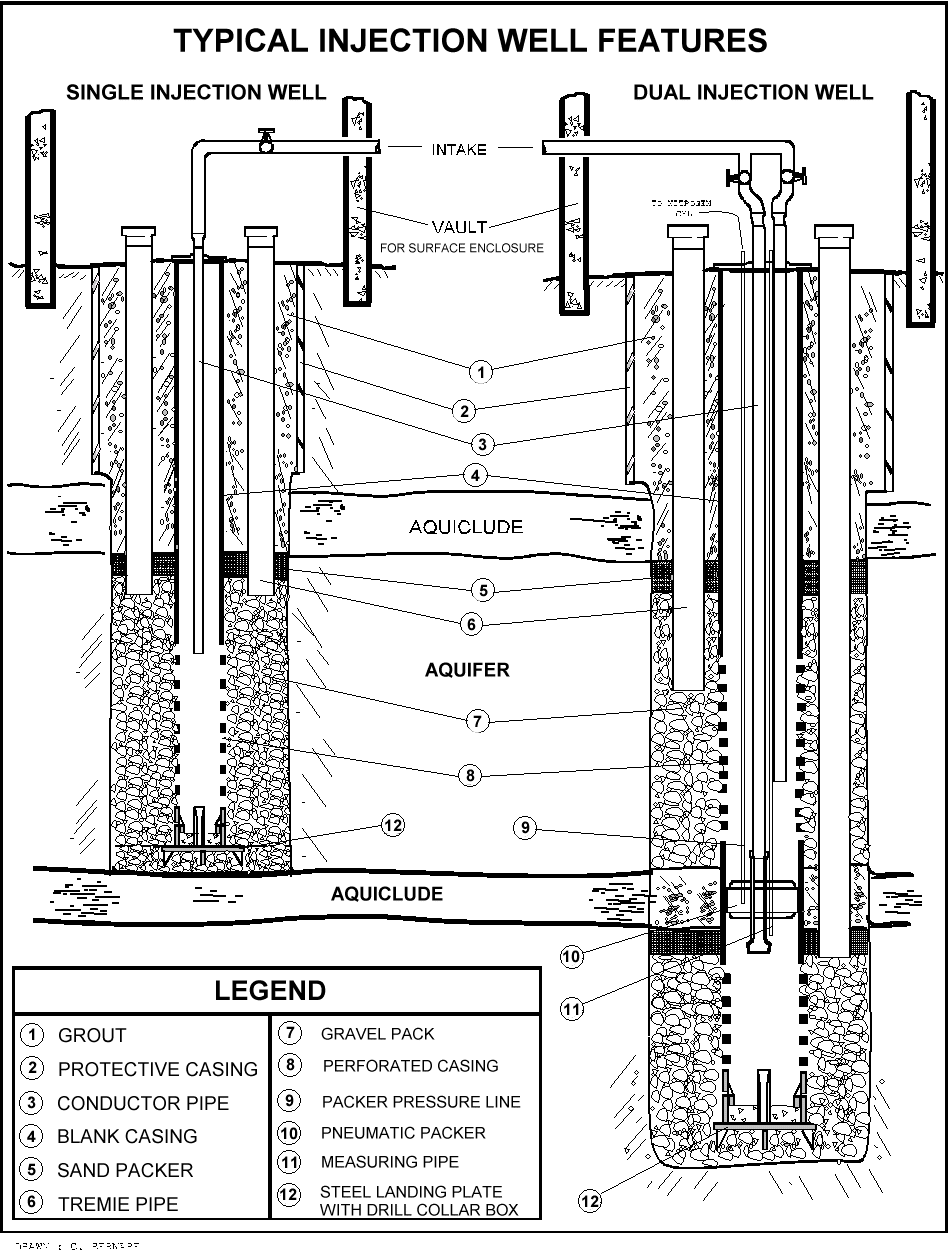 Click Map to Enlarge
Click Map to EnlargeINJECTION WELL AND COMPONENTS
Injection wells at the three seawater barriers vary in design and are constructed with transite (asbestos cement ), low carbon steel, or stainless steel casings and screens depending on the era of construction. The wells are equipped with an orifice plate or flow tube differential pressure flow measurement ports. These and other injection well header appurtenances are placed within a reinforced concrete vault. A six-inch lateral pipe leaves the distribution pipeline, which is equipped with a shut off valve, and connects to the header assembly.
Among the different injection well designs, there exist two major categories: single zone injection wells & dual zone injection wells. A single zone injection well is designed to provide groundwater recharge to a single targeted aquifer.
A dual zone injection well is designed to recharge two underground aquifers simultaneously or independently. It has a single casing perforated for communication in both the targeted aquifers separated by grouting of the annulus space at the aquiclude layer which separates the two. Inside the casing, hydraulic separation is maintained by an inflatable packer.
A packer provides hydraulic separation between two aquifers by an inflatable rubber assembly which is filled with nitrogen gas supplied from the ground surface. The vertical force that the packer must withstand to separate the two aquifers which have two different injection heads is developed by the skin friction between the rubber and the casing. This is controlled by the quantity of internal pressure maintained within the rubber bladder assembly.